2006 World Baseball Classic
| 2006 World Baseball Classic | |||||||||||||||||
 |
|||||||||||||||||
| Dates | March 3 to 20, 2006 | ||||||||||||||||
| Teams | 16 | ||||||||||||||||
| Finals | |||||||||||||||||
|---|---|---|---|---|---|---|---|---|---|---|---|---|---|---|---|---|---|
| Finals host(s) | PETCO Park, San Diego, California | ||||||||||||||||
|
|||||||||||||||||
| Semifinalists | |||||||||||||||||
| Round 2 | |||||||||||||||||
| Pool 1 host(s) | Angel Stadium, Anaheim, California | ||||||||||||||||
| Pool 2 host(s) | Hiram Bithorn Stadium, San Juan, Puerto Rico | ||||||||||||||||
| Round 1 | |||||||||||||||||
| Pool A host(s) | Tokyo Dome, Tokyo, Japan | ||||||||||||||||
| Pool B host(s) | Chase Field, Phoenix, Arizona Scottsdale Stadium, Scottsdale, Arizona |
||||||||||||||||
| Pool C host(s) | Hiram Bithorn Stadium, San Juan, Puerto Rico | ||||||||||||||||
| Pool D host(s) | Cracker Jack Stadium, Lake Buena Vista, Florida | ||||||||||||||||
| Tournament statistics | |||||||||||||||||
| Games played | 39 | ||||||||||||||||
| Total attendance | 737,112 (avg. 18,900; pct. 67.3%) | ||||||||||||||||
| Tournament MVP | |||||||||||||||||
The 2006 World Baseball Classic was the inaugural tournament between national baseball teams that included players from Major League Baseball. It was held from March 3 – March 20 in stadiums that are in and around ; ; ; ; ; ; and . Japan, led by Sadaharu Oh, became the first champions.
Contents |
Format
The first World Baseball Classic featured 16 teams in a round-robin. Each team played the other three teams in their pool once. Teams will be ranked by winning percentage in Round 1, with the top two teams in each pool advancing to Round 2, where the teams from Pools A and B (in Pool 1) and the teams from Pools C and D (in Pool 2) competed against each other in another round-robin.
Teams will be ranked by winning percentage in Round 2, without regard to the results of Round 1, with the top two teams from each pool entered a four-team single-elimination bracket, with the pool winners and runners-up from each pool facing each other in the Semifinals. The winners of the Semifinals then met to determine the World Baseball Classic Champions.
In the Final, the Team with the higher winning percentage of games in the Tournament shall be the home team. If the Teams competing in the Final have identical winning percentages in the tournament, then WBCI shall conduct a coin flip or draw to determine the home team.
In Round 1 and 2, ties shall be broken in the following order of priority:
1. The winner of head-to-head games between the tied teams;
2. The team allowing the fewest runs per nine innings (RA/9) in head-to-head games between the tied teams;
3. The team allowing the fewest earned runs per nine innings (ERA) in head-to-head games between the tied teams;
4. The team with the highest highest batting average (AVG) in head-to-head games between the tied teams;
5. Drawing of lots, conducted by WBCI.
In Final Standings, ties shall be broken in the following order of priority:
1. The team allowing the fewest runs per nine innings (RA/9) in all games;
2. The team allowing the fewest earned runs per nine innings (ERA) in all games;
3. The team with the highest highest batting average (AVG) in all games;
Note: Standings and Tiebreaking Procedures are based on International Baseball Federation rules.
Rosters
Each participating national federation initially submitted a 45-man provisional roster. Final rosters of 28 players, which also must include a minimum of 13 pitchers and two catchers, were later submitted. If a player on the submitted roster was unable to play, usually due to injury, he could be substituted at any time before the start of the tournament.
Venues

Eight stadia were used during the tournament:
| Pool A – Tokyo | Pool B – Phoenix | Pool B – Scottsdale | Pool C – San Juan |
|---|---|---|---|
| Tokyo Dome | Chase Field | Scottsdale Stadium | Hiram Bithorn Stadium |
| Capacity: 42,000 | Capacity: 49,033 | Capacity: 8,500 | Capacity: 18,000 |
 |
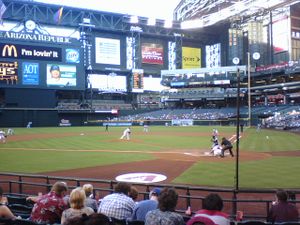 |
No Image Available | |
| Pool D – Lake Buena Vista | Pool 1 – Anaheim | Pool 2 – San Juan | Finals – San Diego |
| Cracker Jack Stadium | Angel Stadium | Hiram Bithorn Stadium | PETCO Park |
| Capacity: 9,500 | Capacity: 45,037 | Capacity: 18,000 | Capacity: 42,445 |
 |
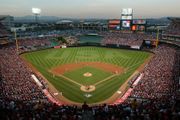 |
Pools composition
The teams selected for the inaugural World Baseball Classic were chosen because they were judged to be the "best baseball-playing nations in the world and provide global representation for the event."[1] There was no official qualifying competition.
| Pool A | Pool B | Pool C | Pool D |
|---|---|---|---|
Round 1
Pool A
| Rk | Team | W | L | Tiebreaker |
|---|---|---|---|---|
| 1 | 3 | 0 | – | |
| 2 | 2 | 1 | – | |
| 3 | 1 | 2 | – | |
| 4 | 0 | 3 | – |
| March 3, 2006 | South Korea |
2 – 0 | Tokyo Dome, Japan Attendance: 5,193 |
|
| Boxscore |
| March 3, 2006 | Japan |
18 – 2 (F/8) | Tokyo Dome, Japan Attendance: 15,869 |
|
| Boxscore |
| March 4, 2006 | China |
1 – 10 | Tokyo Dome, Japan Attendance: 3,925 |
|
| Boxscore |
| March 4, 2006 | Japan |
14 – 3 (F/7) | Tokyo Dome, Japan Attendance: 31,047 |
|
| Boxscore |
| March 5, 2006 | Chinese Taipei |
12 – 3 | Tokyo Dome, Japan Attendance: 4,577 |
|
| Boxscore |
| March 5, 2006 | South Korea |
3 – 2 | Tokyo Dome, Japan Attendance: 40,353 |
|
| Boxscore |
Pool B
| Rk | Team | W | L | Tiebreaker |
|---|---|---|---|---|
| 1 | 2 | 1 | 1–1, 1.59 RA/9 | |
| 2 | 2 | 1 | 1–1, 4.00 RA/9 | |
| 3 | 2 | 1 | 1–1, 7.50 RA/9 | |
| 4 | 0 | 3 | – |
| March 7, 2006 | Mexico |
0 – 2 | Chase Field, Arizona Attendance: 32,727 |
|
| Boxscore |
| March 7, 2006 | Canada |
11 – 8 | Scottsdale Stadium, Arizona Attendance: 5,829 |
|
| Boxscore |
| March 8, 2006 | Canada |
8 – 6 | Chase Field, Arizona Attendance: 16,993 |
|
| Boxscore |
| March 8, 2006 | South Africa |
4 – 10 | Scottsdale Stadium, Arizona Attendance: 7,937 |
|
| Boxscore |
| March 9, 2006 | Mexico |
9 – 1 | Chase Field, Arizona Attendance: 15,744 |
|
| Boxscore |
| March 10, 2006 | United States |
17 – 0 (F/5) | Scottsdale Stadium, Arizona Attendance: 11,975 |
|
| Boxscore |
Pool C
| Rk | Team | W | L | Tiebreaker |
|---|---|---|---|---|
| 1 | 3 | 0 | – | |
| 2 | 2 | 1 | – | |
| 3 | 1 | 2 | – | |
| 4 | 0 | 3 | – |
| March 7, 2006 | Panama |
1 – 2 | Hiram Bithorn Stadium, Puerto Rico Attendance: 19,043 |
|
| Boxscore |
| March 8, 2006 | Cuba |
8 – 6 (F/11) | Hiram Bithorn Stadium, Puerto Rico Attendance: 6,129 |
|
| Boxscore |
| March 8, 2006 | Puerto Rico |
8 – 3 | Hiram Bithorn Stadium, Puerto Rico Attendance: 15,570 |
|
| Boxscore |
| March 9, 2006 | Cuba |
11 – 2 | Hiram Bithorn Stadium, Puerto Rico Attendance: 7,657 |
|
| Boxscore |
| March 10, 2006 | Netherlands |
10 – 0 (F/7) | Hiram Bithorn Stadium, Puerto Rico Attendance: 6,337 |
|
| Boxscore |
| March 10, 2006 | Puerto Rico |
12 – 2 (F/7) | Hiram Bithorn Stadium, Puerto Rico Attendance: 19,736 |
|
| Boxscore |
Pool D
| Rk | Team | W | L | Tiebreaker |
|---|---|---|---|---|
| 1 | 3 | 0 | – | |
| 2 | 2 | 1 | – | |
| 3 | 1 | 2 | – | |
| 4 | 0 | 3 | – |
| March 7, 2006 | Dominican Republic |
11 – 5 | Cracker Jack Stadium, Florida Attendance: 10,645 |
|
| Boxscore |
| March 7, 2006 | Australia |
0 – 10 (F/7) | Cracker Jack Stadium, Florida Attendance: 8,099 |
|
| Boxscore |
| March 8, 2006 | Italy |
0 – 6 | Cracker Jack Stadium, Florida Attendance: 10,101 |
|
| Boxscore |
| March 9, 2006 | Italy |
3 – 8 | Cracker Jack Stadium, Florida Attendance: 9,949 |
|
| Boxscore |
| March 9, 2006 | Venezuela |
2 – 0 | Cracker Jack Stadium, Florida Attendance: 10,111 |
|
| Boxscore |
| March 10, 2006 | Australia |
4 – 6 | Cracker Jack Stadium, Florida Attendance: 11,083 |
|
| Boxscore |
Round 2
Pool 1
| Rk | Team | W | L | Tiebreaker |
|---|---|---|---|---|
| 1 | 3 | 0 | – | |
| 2 | 1 | 2 | 1–1, 2.55 RA/9 | |
| 3 | 1 | 2 | 1–1, 2.65 RA/9 | |
| 4 | 1 | 2 | 1–1, 3.50 RA/9 |
| March 12, 2006 | Japan |
3 – 4 | Angel Stadium, California Attendance: 32,896 |
|
| Boxscore |
| March 12, 2006 | Mexico |
1 – 2 | Angel Stadium, California Attendance: 42,979 |
|
| Boxscore |
| March 13, 2006 | United States |
3 – 7 | Angel Stadium, California Attendance: 21,288 |
|
| Boxscore |
| March 14, 2006 | Japan |
6 – 1 | Angel Stadium, California Attendance: 16,591 |
|
| Boxscore |
| March 15, 2006 | South Korea |
2 – 1 | Angel Stadium, California Attendance: 39,679 |
|
| Boxscore |
| March 16, 2006 | United States |
1 – 2 | Angel Stadium, California Attendance: 38,284 |
|
| Boxscore |
Pool 2
| Rk | Team | W | L | Tiebreaker |
|---|---|---|---|---|
| 1 | 2 | 1 | 1–0 | |
| 2 | 2 | 1 | 0–1 | |
| 3 | 1 | 2 | 1–0 | |
| 4 | 1 | 2 | 0–1 |
| March 12, 2006 | Cuba |
7 – 2 | Hiram Bithorn Stadium, Puerto Rico Attendance: 13,697 |
|
| Boxscore |
| March 12, 2006 | Puerto Rico |
7 – 1 | Hiram Bithorn Stadium, Puerto Rico Attendance: 19,692 |
|
| Boxscore |
| March 13, 2006 | Dominican Republic |
7 – 3 | Hiram Bithorn Stadium, Puerto Rico Attendance: 6,594 |
|
| Boxscore |
| March 13, 2006 | Venezuela |
6 – 0 | Hiram Bithorn Stadium, Puerto Rico Attendance: 19,400 |
|
| Boxscore |
| March 14, 2006 | Venezuela |
1 – 2 | Hiram Bithorn Stadium, Puerto Rico Attendance: 13,007 |
|
| Boxscore |
| March 15, 2006 | Cuba |
4 – 3 | Hiram Bithorn Stadium, Puerto Rico Attendance: 19,773 |
|
| Boxscore |
Finals
| Semifinals | Final | |||||||
| 2R | |
3 | ||||||
| 2W | |
1 | ||||||
| SF1W | |
6 | ||||||
| SF2W | |
10 | ||||||
| 1R | |
6 | ||||||
| 1W | |
0 | ||||||
| March 18, 2006 | Cuba |
3 – 1 | PETCO Park, California Attendance: 41,268 |
|
| Boxscore |
| March 18, 2006 | Japan |
6 – 0 | PETCO Park, California Attendance: 42,639 |
|
| Boxscore |
| March 20, 2006 | Japan |
10 – 6 | PETCO Park, California Attendance: 42,696 |
|
| Boxscore |
Final standings
|
Championship Trophy
|
|||||||||||||||||||||||||||||||||||||||||||||||||||||||||||||||||||||||||||||||||||||||||||||||||||||||||||||||
Attendance
737,112 (avg. 18,900; pct. 67.3%)
Round 1
326,629 (avg. 13,609; pct. 55.4%)
- Pool A – 100,964 (avg. 16,827; pct. 40.1%)
- Pool B – 91,205 (avg. 15,200; pct. 52.8%)
- Chase Field – 65,464 (avg. 21,821; pct. 44.5%)
- Scottsdale Stadium – 25,741 (avg. 8,580; pct. 100.9%)
- Pool C – 74,472 (avg. 12,412; pct. 69.0%)
- Pool D – 59,988 (avg. 9,998; pct. 105.2%)
Round 2
283,880 (avg. 23,656; pct. 75.1%)
- Pool 1 – 191,717 (avg. 31,952; pct. 70.9%)
- Pool 2 – 92,163 (avg. 15,360; pct. 85.3%)
Finals
126,603 (avg. 42,201; pct. 99.4%)
- Semifinals – 83,907 (avg. 41,953; pct. 98.8%)
- Final – 42,696 (avg. 42,696; pct. 100.6%)
All-WBC team
| Position | Player |
|---|---|
| C | |
| 1B | |
| 2B | |
| SS | |
| 3B | |
| OF | |
| DH | |
| P | |
Statistics
Team Batting
Ordered by batting average [1]
| Team | G | AB | R | H | 2B | 3B | HR | RBI | TB | BB | SO | SB | CS | OBP | SLG | AVG | OPS |
|---|---|---|---|---|---|---|---|---|---|---|---|---|---|---|---|---|---|
| 8 | 270 | 60 | 84 | 9 | 3 | 10 | 57 | 129 | 32 | 39 | 13 | 2 | .390 | .478 | .311 | .868 | |
| 6 | 197 | 33 | 57 | 7 | 2 | 9 | 32 | 95 | 19 | 26 | 1 | 1 | .359 | .482 | .289 | .841 | |
| 6 | 203 | 32 | 58 | 9 | 0 | 8 | 31 | 91 | 24 | 34 | 7 | 3 | .365 | .448 | .286 | .813 | |
| 8 | 279 | 44 | 79 | 12 | 1 | 8 | 41 | 117 | 24 | 51 | 3 | 4 | .357 | .419 | .283 | .776 | |
| 3 | 104 | 20 | 29 | 10 | 4 | 2 | 17 | 53 | 23 | 24 | 2 | 2 | .419 | .510 | .279 | .928 | |
| 3 | 102 | 15 | 27 | 3 | 0 | 0 | 11 | 30 | 11 | 22 | 0 | 0 | .342 | .294 | .265 | .636 | |
| 3 | 102 | 15 | 27 | 9 | 0 | 1 | 11 | 39 | 7 | 21 | 3 | 1 | .342 | .382 | .265 | .724 | |
| 7 | 23 | 36 | 61 | 8 | 0 | 9 | 28 | 96 | 33 | 33 | 6 | 4 | .364 | .412 | .262 | .776 | |
| 3 | 87 | 12 | 22 | 3 | 1 | 0 | 11 | 27 | 7 | 34 | 0 | 2 | .330 | .310 | .253 | .640 | |
| 7 | 218 | 26 | 53 | 13 | 1 | 6 | 26 | 86 | 16 | 51 | 2 | 0 | .305 | .394 | .243 | .699 | |
| 6 | 189 | 23 | 44 | 11 | 1 | 5 | 21 | 72 | 15 | 36 | 2 | 0 | .292 | .381 | .233 | .673 | |
| 3 | 95 | 13 | 19 | 8 | 2 | 2 | 13 | 37 | 11 | 24 | 0 | 0 | .290 | .389 | .200 | .679 | |
| 6 | 188 | 22 | 35 | 6 | 0 | 7 | 20 | 62 | 35 | 40 | 2 | 1 | .323 | .330 | .186 | .653 | |
| 3 | 92 | 6 | 17 | 4 | 0 | 2 | 5 | 27 | 9 | 33 | 0 | 2 | .286 | .293 | .185 | .579 | |
| 3 | 91 | 7 | 15 | 3 | 0 | 1 | 7 | 21 | 10 | 16 | 0 | 1 | .276 | .231 | .165 | .507 | |
| 3 | 80 | 4 | 9 | 2 | 0 | 0 | 3 | 11 | 7 | 32 | 3 | 2 | .191 | .138 | .113 | .329 |
Batting Leaders
(minimum 2.7 plate appearances/game) [2]
Batting Average
 Adam Stern – .667
Adam Stern – .667 Ken Griffey, Jr. – .524
Ken Griffey, Jr. – .524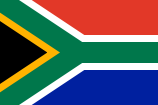 Brett Willemburg – .500
Brett Willemburg – .500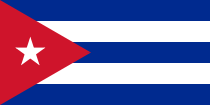 Yoandy Garlobo – .480
Yoandy Garlobo – .480 Jason Bay – .455
Jason Bay – .455 Nicholas Dempsey – .455
Nicholas Dempsey – .455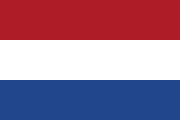 Sidney de Jong – .455
Sidney de Jong – .455
Hits
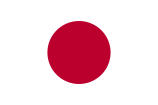 Nobuhiko Matsunaka – 13
Nobuhiko Matsunaka – 13 Yoandy Garlobo – 12
Yoandy Garlobo – 12 Ichiro Suzuki – 12
Ichiro Suzuki – 12 Ken Griffey, Jr. – 11
Ken Griffey, Jr. – 11 Tsuyoshi Nishioka – 11
Tsuyoshi Nishioka – 11
Runs
 Nobuhiko Matsunaka – 11
Nobuhiko Matsunaka – 11 Yulieski Gourriel – 8
Yulieski Gourriel – 8 Seung-Yeop Lee – 8
Seung-Yeop Lee – 8 Tsuyoshi Nishioka – 7
Tsuyoshi Nishioka – 7 Ichiro Suzuki – 7
Ichiro Suzuki – 7
Doubles
 Jong-Beom Lee – 6
Jong-Beom Lee – 6 Nobuhiko Matsunaka – 4
Nobuhiko Matsunaka – 4 Frederich Cepeda – 3
Frederich Cepeda – 3 Yung-Chi Chen – 3
Yung-Chi Chen – 3 Justin Morneau – 3
Justin Morneau – 3 Miguel Tejada – 3
Miguel Tejada – 3
Triples
- 15 players tied with 1
Home Runs
 Seung-Yeop Lee – 5
Seung-Yeop Lee – 5 Adrián Beltré – 4
Adrián Beltré – 4 Ken Griffey, Jr. – 3
Ken Griffey, Jr. – 3 Derrek Lee – 3
Derrek Lee – 3 David Ortiz – 3
David Ortiz – 3 Hitoshi Tamura – 3
Hitoshi Tamura – 3
Grand Slams
 Jason Varitek – 1
Jason Varitek – 1
Runs Batted In
 Ken Griffey, Jr. – 10
Ken Griffey, Jr. – 10 Seung-Yeop Lee – 10
Seung-Yeop Lee – 10 Adrián Beltré – 9
Adrián Beltré – 9 Hitoshi Tamura – 9
Hitoshi Tamura – 9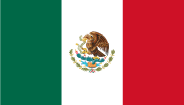 Jorge Cantu – 8
Jorge Cantu – 8 Frederich Cepeda – 8
Frederich Cepeda – 8 Derrek Lee – 8
Derrek Lee – 8 Tsuyoshi Nishioka – 8
Tsuyoshi Nishioka – 8
Total Bases
 Seung-Yeop Lee – 23
Seung-Yeop Lee – 23 Ken Griffey, Jr. – 22
Ken Griffey, Jr. – 22 Frederich Cepeda – 19
Frederich Cepeda – 19 Tsuyoshi Nishioka – 19
Tsuyoshi Nishioka – 19 Adrián Beltré – 18
Adrián Beltré – 18
Walks
 David Ortiz – 8
David Ortiz – 8 Albert Pujols – 7
Albert Pujols – 7 Bobby Abreu – 6
Bobby Abreu – 6 Frederich Cepeda – 6
Frederich Cepeda – 6 Tsuyoshi Nishioka – 6
Tsuyoshi Nishioka – 6 Hitoshi Tamura – 6
Hitoshi Tamura – 6
Strikeouts
 Hitoshi Tamura – 9
Hitoshi Tamura – 9 Ariel Prestano – 8
Ariel Prestano – 8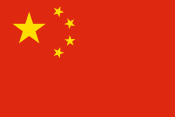 Yufeng Zhang – 8
Yufeng Zhang – 8 Bobby Abreu – 7
Bobby Abreu – 7 Frederich Cepeda – 7
Frederich Cepeda – 7 Jin-Man Park – 7
Jin-Man Park – 7 Alex Rodriguez – 7
Alex Rodriguez – 7
Stolen Bases
 Tsuyoshi Nishioka – 5
Tsuyoshi Nishioka – 5 Ichiro Suzuki – 4
Ichiro Suzuki – 4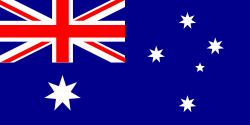 Trent Durrington – 3
Trent Durrington – 3 Eduardo Paret – 3
Eduardo Paret – 3- 8 players tied with 2
On-Base Percentage
 Adam Stern – .727
Adam Stern – .727 Ken Griffey, Jr. – .583
Ken Griffey, Jr. – .583 Jason Bay – .571
Jason Bay – .571 Yi Feng – .556
Yi Feng – .556 Yoandy Garlobo – .536
Yoandy Garlobo – .536
Slugging Percentage
 Adam Stern – 1.333
Adam Stern – 1.333 Ken Griffey, Jr. – 1.048
Ken Griffey, Jr. – 1.048 Seung-Yeop Lee – .958
Seung-Yeop Lee – .958 Adrián Beltré – .900
Adrián Beltré – .900 Yung-Chi Chen – .786
Yung-Chi Chen – .786
OPS
 Adam Stern – 2.061
Adam Stern – 2.061 Ken Griffey, Jr. – 1.631
Ken Griffey, Jr. – 1.631 Seung-Yeop Lee – 1.372
Seung-Yeop Lee – 1.372 Adrián Beltré – 1.291
Adrián Beltré – 1.291 Chipper Jones – 1.241
Chipper Jones – 1.241
Team Pitching
Ordered by ERA [3]
| Team | W | L | ERA | G | CG | SHO | SV | IP | H | R | ER | HR | HB | BB | SO | WHIP | HLD | GF |
|---|---|---|---|---|---|---|---|---|---|---|---|---|---|---|---|---|---|---|
| 6 | 1 | 2.00 | 7 | 0 | 1 | 4 | 63.0 | 45 | 14 | 14 | 7 | 4 | 18 | 50 | 1.00 | 8 | 7 | |
| 4 | 2 | 2.08 | 6 | 0 | 0 | 1 | 52.0 | 33 | 17 | 12 | 3 | 5 | 22 | 28 | 1.06 | 5 | 6 | |
| 5 | 3 | 2.49 | 8 | 0 | 1 | 2 | 68.2 | 52 | 21 | 19 | 7 | 8 | 11 | 62 | 0.92 | 3 | 8 | |
| 5 | 2 | 2.57 | 7 | 0 | 0 | 3 | 63.0 | 56 | 26 | 18 | 3 | 4 | 23 | 53 | 1.25 | 6 | 7 | |
| 3 | 3 | 2.77 | 6 | 0 | 0 | 1 | 52.0 | 41 | 16 | 16 | 4 | 3 | 17 | 37 | 1.12 | 4 | 6 | |
| 3 | 3 | 3.06 | 6 | 0 | 3 | 1 | 53.0 | 39 | 20 | 18 | 6 | 0 | 20 | 55 | 1.11 | 7 | 6 | |
| 3 | 3 | 3.75 | 6 | 0 | 2 | 1 | 48.0 | 43 | 20 | 20 | 4 | 3 | 17 | 48 | 1.25 | 4 | 6 | |
| 5 | 3 | 4.13 | 8 | 0 | 0 | 4 | 72.0 | 66 | 43 | 33 | 7 | 6 | 41 | 51 | 1.49 | 2 | 8 | |
| 1 | 2 | 4.30 | 3 | 0 | 1 | 0 | 23.0 | 21 | 14 | 11 | 4 | 2 | 8 | 16 | 1.26 | 0 | 3 | |
| 0 | 3 | 5.19 | 3 | 0 | 0 | 0 | 26.0 | 33 | 20 | 15 | 2 | 5 | 13 | 17 | 1.77 | 0 | 3 | |
| 1 | 2 | 6.48 | 3 | 1 | 1 | 0 | 25.0 | 30 | 19 | 18 | 5 | 3 | 8 | 14 | 1.52 | 0 | 2 | |
| 1 | 2 | 6.84 | 3 | 0 | 0 | 0 | 25.0 | 31 | 19 | 19 | 1 | 2 | 14 | 22 | 1.80 | 0 | 3 | |
| 0 | 3 | 6.85 | 3 | 0 | 0 | 0 | 23.2 | 24 | 18 | 18 | 3 | 2 | 26 | 16 | 2.11 | 0 | 3 | |
| 2 | 1 | 7.33 | 3 | 0 | 0 | 2 | 27.0 | 32 | 23 | 22 | 3 | 3 | 13 | 18 | 1.67 | 2 | 3 | |
| 0 | 3 | 9.72 | 3 | 0 | 0 | 0 | 25.0 | 48 | 40 | 27 | 6 | 4 | 10 | 16 | 2.32 | 0 | 3 | |
| 0 | 3 | 13.50 | 3 | 0 | 0 | 0 | 22.0 | 42 | 38 | 33 | 5 | 2 | 22 | 13 | 2.91 | 0 | 3 |
Pitching Leaders
(minimum 0.8 innings pitched/game) [4]
Wins
 Daisuke Matsuzaka – 3
Daisuke Matsuzaka – 3 Odalis Perez – 2
Odalis Perez – 2 Ormari Romero – 2
Ormari Romero – 2 Jae Weong Seo – 2
Jae Weong Seo – 2 Min-Han Son – 2
Min-Han Son – 2 Koji Uehara – 2
Koji Uehara – 2
Losses
 Rodrigo López – 2
Rodrigo López – 2 Johan Santana – 2
Johan Santana – 2 Dontrelle Willis – 2
Dontrelle Willis – 2- 31 players tied with 1
Saves
 Chan Ho Park – 3
Chan Ho Park – 3 Yadel Martí – 2
Yadel Martí – 2- 14 tied with 1
Innings Pitched
 Koji Uehara – 17.0
Koji Uehara – 17.0 Jae Weong Seo – 14.0
Jae Weong Seo – 14.0 Bartolo Colón – 14.0
Bartolo Colón – 14.0 Shunsuke Watanabe – 13.2
Shunsuke Watanabe – 13.2 Daisuke Matsuzaka – 13.0
Daisuke Matsuzaka – 13.0
Hits Allowed
 Koji Uehara – 17
Koji Uehara – 17 Bartolo Colón – 13
Bartolo Colón – 13 Pedro Luis Lazo – 12
Pedro Luis Lazo – 12 Esteban Loaiza – 10
Esteban Loaiza – 10 Carl Michaels – 10
Carl Michaels – 10 Dontrelle Willis – 10
Dontrelle Willis – 10
Runs Allowed
 Carl Michaels – 10
Carl Michaels – 10 Barry Armitage – 9
Barry Armitage – 9 Adiel Palma – 8
Adiel Palma – 8 Dontrelle Willis – 8
Dontrelle Willis – 8 Tao Bu – 7
Tao Bu – 7 Vicyohandry Odelin – 7
Vicyohandry Odelin – 7
Earned Runs Allowed
 Carl Michaels – 10
Carl Michaels – 10 Dontrelle Willis – 8
Dontrelle Willis – 8 Barry Armitage – 7
Barry Armitage – 7 Jeff Francis – 6
Jeff Francis – 6 Calvin Maduro – 6
Calvin Maduro – 6 Vicyohandry Odelin – 6
Vicyohandry Odelin – 6
 Yadel Martí – 0.00 (in 12.2 innings)
Yadel Martí – 0.00 (in 12.2 innings) Chan Ho Park – 0.00 (10.0)
Chan Ho Park – 0.00 (10.0) Kelvim Escobar – 0.00 (7.2)
Kelvim Escobar – 0.00 (7.2) Shairon Martis – 0.00 (7.0)
Shairon Martis – 0.00 (7.0) Carlos Silva – 0.00 (5.2)
Carlos Silva – 0.00 (5.2)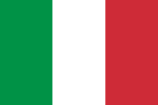 Jason Grilli – 0.00 (4.2)
Jason Grilli – 0.00 (4.2) Erik Bedard – 0.00 (4.0)
Erik Bedard – 0.00 (4.0) Wei-Lun Pan – 0.00 (4.0)
Wei-Lun Pan – 0.00 (4.0) Adam Loewen – 0.00 (3.2)
Adam Loewen – 0.00 (3.2) Po-Hsuan Keng – 0.00 (3.0)
Po-Hsuan Keng – 0.00 (3.0)
Walks
 Dontrelle Willis – 6
Dontrelle Willis – 6 Kelvim Escobar – 5
Kelvim Escobar – 5 Yulieski Gonzalez – 5
Yulieski Gonzalez – 5 Esteban Loaiza – 5
Esteban Loaiza – 5 Peter Moylan – 5
Peter Moylan – 5 Adiel Palma – 5
Adiel Palma – 5 Carlos Zambrano – 5
Carlos Zambrano – 5
Strikeouts
 Koji Uehara – 16
Koji Uehara – 16 Freddy Garcia – 11
Freddy Garcia – 11 Yadel Martí – 11
Yadel Martí – 11 Roger Clemens – 10
Roger Clemens – 10 Daisuke Matsuzaka – 10
Daisuke Matsuzaka – 10 Johan Santana – 10
Johan Santana – 10
WHIP
 Shairon Martis – 0.14
Shairon Martis – 0.14 Jason Grilli – 0.20
Jason Grilli – 0.20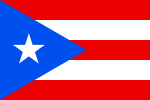 José Santiago – 0.63
José Santiago – 0.63 Po-Hsuan Keng – 0.67
Po-Hsuan Keng – 0.67 Chenhao Li – 0.67
Chenhao Li – 0.67
 Shairon Martis – 1
Shairon Martis – 1
Additional rules
There were several rule changes from normal major league play. Pitchers were held to a pitch count of 65 pitches in the first round, 80 pitches in the second round, and 95 in the semifinals and championship rounds. (Netherlands pitcher Shairon Martis used exactly 65 pitches to throw the only no-hitter of the tournament, a 10-0 win over Panama that was stopped by the mercy rule [see below].) If a pitcher reached his maximum pitch count in the middle of an at-bat, he could continue to pitch to that batter, but was required to be replaced once that at-bat ended. A 30-pitch outing needed to be followed by one day off, and a 50-pitch outing by four days off. No one would be allowed to pitch on three consecutive days.

A mercy rule came into effect when one team lead by either fifteen runs after five innings, or ten runs after seven innings in the first two rounds. In addition, ties could be called after fourteen innings of play.
The designated hitter rule was in place for all games.
Controversies
- Format
South Korea completed the first two rounds undefeated (6-0) but was still forced to play Japan, a team it had already beaten twice, in the semifinal round. South Korea lost the match and subsequently was placed 3rd, despite the fact that South Korea's final standings were 6-1, with the most wins. Other international sporting competitions, such as the FIFA World Cup, are formatted so as to make it impossible that teams play each other three times. They can only face twice at most - in round robin group play and then again for the championship or 3rd-place match. In addition, the regional grouping of teams was called into question, for the groups were perceived to be unevenly distributed, and the four-team pool system and subsequent three-way tiebreakers were widely seen as awkward.
- Umpires
Tournament organizers were unable to reach an agreement with the MLB umpires' union and so the Classic was overseen by umpires from the minor leagues. American umpire Bob Davidson made controversial calls at critical moments in two different games that benefited the American team.
- Republic of China (Taiwan)
The Republic of China baseball team was originally listed as "Taiwan" and bearing the ROC national flag, but following pressure from the People's Republic of China the listing was later changed to Chinese Taipei with the Chinese Taipei Olympic flag.
- Drug Testing
The World Anti-Doping Agency criticized IBAF's drug testing program and threatened to withdraw sanction of the event.[5] South Korean pitcher Myung-Hwan Park tested positive for a banned substance during the event, and he was subsequently kicked out of the WBC.[6]. Venezuelan pitcher Freddy Garcia tested positive for marijuana.
- Team Cuba
In an effort to enforce the United States government's embargo on Cuba, the Cuban team was initially denied a license to play in the United States.[2] Puerto Rico threatened to pull out as hosts,[3] IBAF said they would rescind its sanctioning of the tournament,[4] and the IOC suggested that such a development would influence the ability of American cities to successfully bid to host future Olympic Games.[5] As a result, financing was restructured and the U.S. government withdrew their opposition.[6]
- Player participation
A number of Major League baseball players chose not to participate, some backing out at the last minute. Without players such as Barry Bonds, Vladimir Guerrero (who pulled out because 3 cousins died in a car accident right before World Baseball Classic), Manny Ramírez, Hideki Matsui, and José Vidro, some questioned whether the event would be credible. Cuba barred players such as Orlando Hernández, his half-brother Liván Hernández, and José Contreras, from its team, Cubans who had previously defected. Italy was criticized for a roster made up almost entirely of second-generation Italian Americans such as Mike Piazza.
Success of tournament
Many members of the United States press were skeptical of the Classic since its inception. The event proved to be quite popular, however, providing many memorable moments including a first round game between Venezuela and the Dominican Republic. Attendance was higher than expected at several sites, including the 18,000-seat Hiram Bithorn Stadium in San Juan, which was sold out for every Puerto Rico game in the first two rounds. Though international ratings figures are not yet available, viewership is expected to be high, ESPN spokeswoman Diane Lamb said. In addition, there were 4,000 media credentials issued — more than the World Series — which bodes well for the stated goal of internationalizing the sport. Sports Illustrated writer Tom Verducci reported that "more merchandise was sold in the first round than organizers projected for the entire 17-day event." [7] He also reported that, at one point, jerseys for the Venezuelan team were selling at the rate of one every six seconds.
The U.S. television ratings on ESPN were stronger than initially expected, drawing in more than one million television sets for some games, more than almost any other ESPN program in the month of March. This occurred despite less than stellar airing times for the games. Most were not aired live but taped, and sometimes with innings cut, as the WBC was organized well after ESPN had committed to much of its programming. These ratings all but assure the next WBC, in 2009, will be awarded more live broadcasts during prime time.
Outside the U.S. the tournament was very successful. In Latin America, a first round game between the United States and Mexico, was the third most watched game in the history of ESPN Dos, one of the three Spanish-language channels of ESPN in Latin America.
The allocation of earnings
The total earnings of the World Baseball Classic is divided into net profit (53%) and prize money (47%).[8]
Net profit (53%)
- World Baseball Classic Inc.: 17.5%
- Baseball Players Union: 17.5%
- Japanese Baseball Organization: 7%
- Korean Baseball Organization: 5%
- International Baseball Federation: 5%
- Miscellaneous expenses: 1%
Prize money (47%)
- Japan (Champions): 10%
- Cuba (Runners-up): 7%
- South Korea and Dominican Republic (Semifinalists): 5% each
- The 4 teams that drop out of the Round 2: 3% each
- The 8 teams that drop out of the Round 1: 1% each
See also
- 2006 World Baseball Classic rosters
- Baseball at the Summer Olympics
- Baseball World Cup
- World Series
References
- MLB.com: DuPuy reacts
- Yahoo!: Cuba allowed to play
- Unofficial chat forum of The World Baseball Classic
- ↑ "World Baseball Classic:". Archived from the original on 2009-05-16. http://www.webcitation.org/5gpOef5Yj. Retrieved 2009-03-13.
- ↑ http://sports.espn.go.com/mlb/news/story?id=2259278
- ↑ http://www.primerahora.com/noticia.asp?guid=869CC20D05F8467F93BC93B8D1FF81C4
- ↑ "If U.S. bans Cuba, event will no longer be sanctioned". CNN. January 6, 2006. http://sportsillustrated.cnn.com/2006/writers/john_donovan/01/06/cuba.wbc/. Retrieved April 22, 2010.
- ↑ http://www.sportsline.com/mlb/story/9099373/2
- ↑ http://sports.espn.go.com/mlb/worldclassic2006/news/story?id=2299485
External links
- World Baseball Classic Official Site
- Video and Audio - 2006 World Baseball Classic
- ESPN Podcast Coverage of the WBC
- WEPN New York Live streaming radio coverage of the final
|
||||||||
|
|||||
|
||||||||||||||||||||||||||||||||
